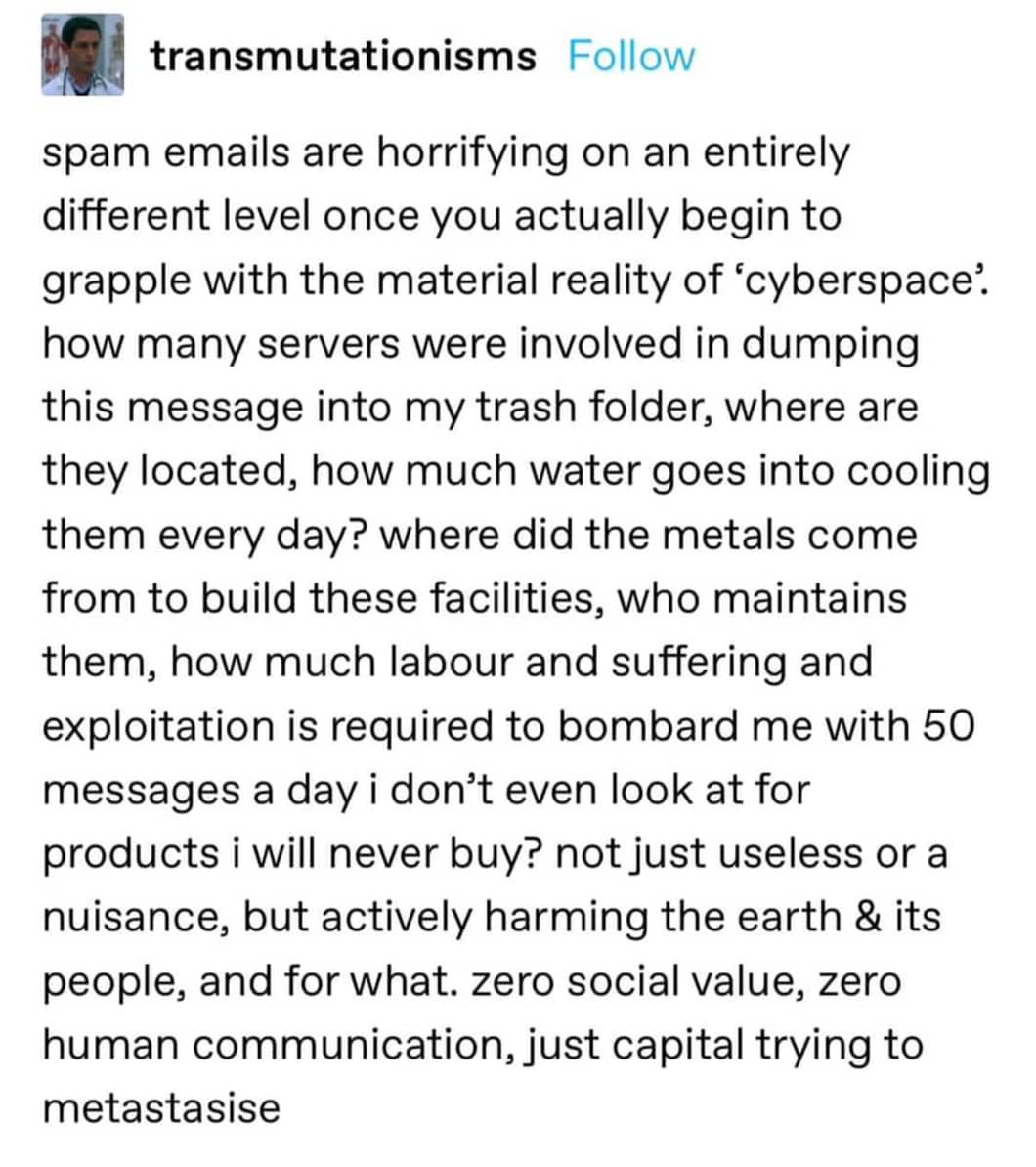this post was submitted on 29 Sep 2023
589 points (97.4% liked)
Microblog Memes
8175 readers
3522 users here now
A place to share screenshots of Microblog posts, whether from Mastodon, tumblr, ~~Twitter~~ X, KBin, Threads or elsewhere.
Created as an evolution of White People Twitter and other tweet-capture subreddits.
Rules:
- Please put at least one word relevant to the post in the post title.
- Be nice.
- No advertising, brand promotion or guerilla marketing.
- Posters are encouraged to link to the toot or tweet etc in the description of posts.
Related communities:
founded 2 years ago
MODERATORS
you are viewing a single comment's thread
view the rest of the comments
view the rest of the comments

Spam emails are riding on the rails of an existing infrastructure that provides incredible value. I agree that they are wasteful, but damn this is some melodramatic doodoo.
https://www.techbusinessnews.com.au/does-email-spam-affect-the-enviroment/
Exactly. It’s not a matter of the metal housing this stuff, it’s the sheer volume of traffic and cost that all the noise makes.
Been thinking about this for years. Used to sell data centers. Every watt of power requires another 2 watts to cool down. Legit phishing, spam, junk, has a cost.
4g of CO2 per email? I find that hard to believe. Probably overestimating emissions like some media did with Netflix.
https://www.iea.org/commentaries/the-carbon-footprint-of-streaming-video-fact-checking-the-headlines
That is a lot of waste, I certainly underestimated. Another commenter has some insight. Sounds like email spam is less of an issue today simply because it's moved to other platforms.
I think you'd be surprised how much dedicated infrastructure and labor exists for A) spam, and B) anti-spam.
I used to manage email servers as part of my job, and >95% of traffic was spam. At the time, that seemed to be typical, judging from my discussions with others in the industry. Today I hear the number is closer to 50%, but I suspect that's because a lot of anti-spam measures are done further upstream (e.g. outgoing mail servers) so a lot of spam never makes it to its target server to begin with. And I guess spamming resources have moved somewhat to other protocols.
We spent thousands of dollars to get dedicated hardware to filter spam, along with a fat support contract for the spam-blocking software. Multiply that by the number of businesses that use email. (Of course, nowadays most businesses use cloud email from either Google or Microsoft, so it's much more efficient as far as anti-spam goes.)
At another job, I set it all up myself using open-source tools because we couldn't afford a fancy commercial solution. This reduced upfront cost but greatly increased the hours of labor I had to spend working on it.
Here's a study from 2012 estimating the cost of spam was about $20 billion per year in America alone: https://www.aeaweb.org/articles?id=10.1257/jep.26.3.87
Huh that's fascinating, I did underestimate the amount of additional lift. Thanks for the context
As are similar complaints about crypto.
*Wow you guys hated this lol
"spam emails provide incredible value"
-lemmy contrarians
They're saying email provides incredible value. Spam merely piggybacks on that.